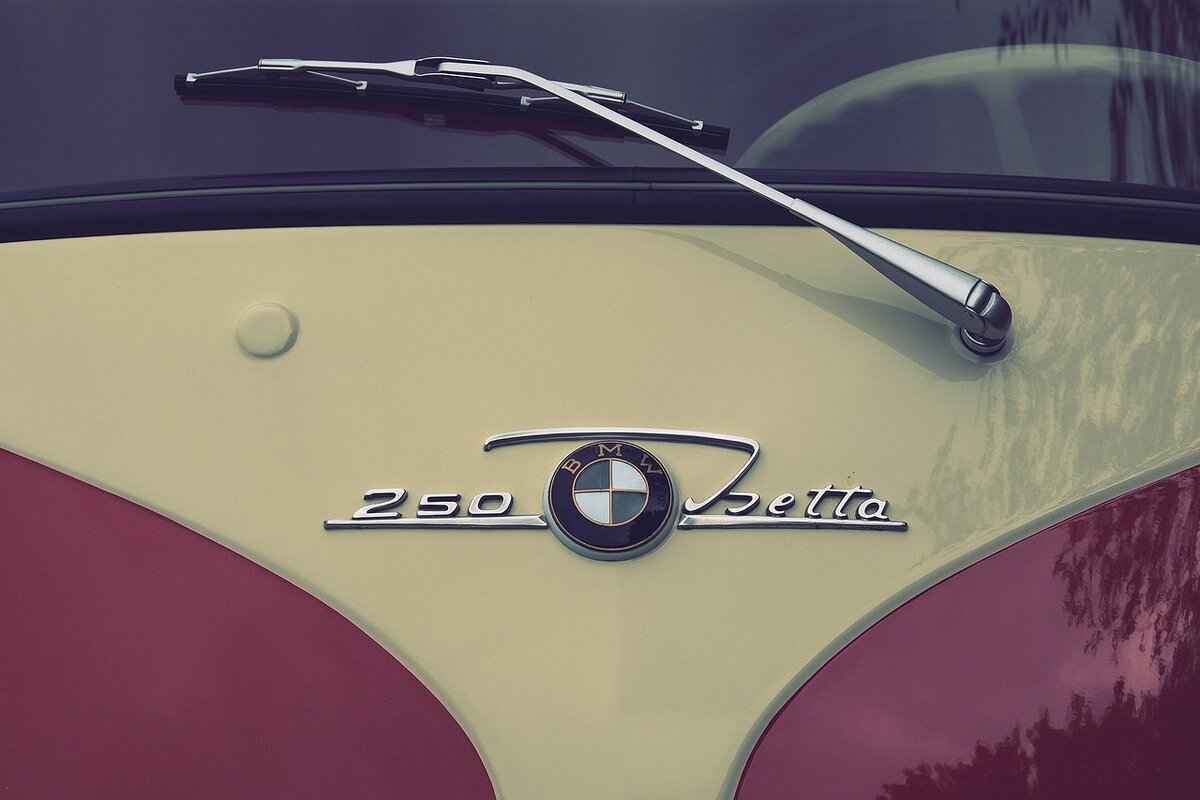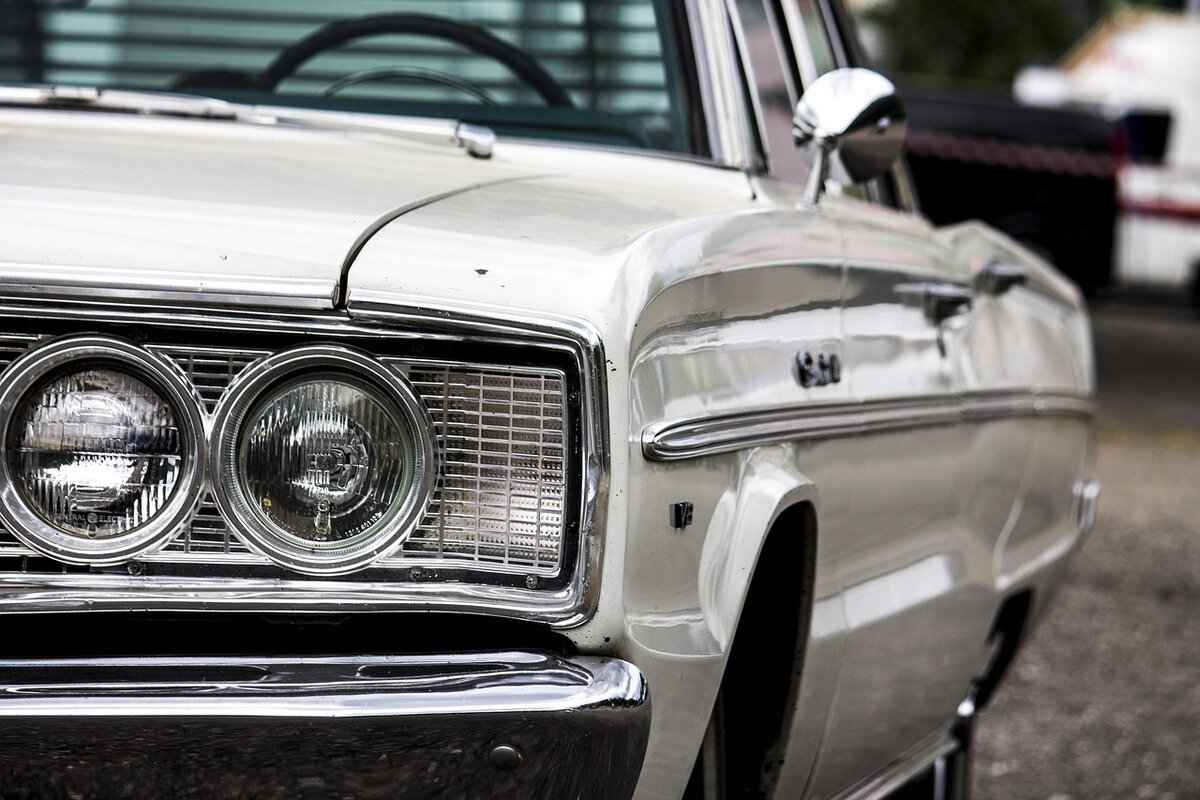This article serves as a comprehensive guide on installing windshield wipers, aiming to provide clarity and ease for anyone looking to replace or install them effectively. Windshield wipers are essential for maintaining visibility while driving, especially during rain or snow. Understanding how to install them correctly can enhance your driving experience and ensure safety on the road.
What Are the Steps to Install Windshield Wipers?
Installing windshield wipers can seem daunting, but breaking it down into manageable steps can make the process straightforward and efficient. Here’s how to do it:
- Gather Your Tools: You will need a flathead screwdriver and the new windshield wipers.
- Lift the Wiper Arms: Gently pull the wiper arms away from the windshield until they are in a vertical position.
- Remove the Old Wipers: Locate the release tab on the old wiper blade and press it to detach the blade from the arm.
- Attach New Wipers: Align the new wiper blade with the arm and push until you hear a click, indicating it is securely attached.
- Lower the Wiper Arms: Carefully place the wiper arms back onto the windshield.
Why Is It Important to Replace Windshield Wipers Regularly?
Regularly replacing windshield wipers is crucial for maintaining visibility and safety while driving, especially in adverse weather conditions. Worn or damaged wipers can lead to reduced visibility, which increases the risk of accidents.
How Often Should You Replace Windshield Wipers?
Experts recommend replacing windshield wipers every six months to a year, depending on usage and environmental conditions. Frequent checks can help you identify when a replacement is necessary.
Signs That Indicate Wiper Replacement Is Needed
- Streaking: If your wipers leave streaks on the windshield, it’s time for a change.
- Skipping: Wipers that skip across the glass indicate wear and tear.
- Squeaking Noises: Unusual noises while operating the wipers can signal that they are worn out.
Environmental Factors Affecting Wiper Lifespan
Extreme temperatures, UV exposure, and heavy rainfall can significantly reduce the lifespan of your windshield wipers. Regular maintenance and timely replacements can combat these effects.
Choosing the Right Windshield Wipers for Your Vehicle
Selecting the appropriate wipers involves understanding the specific requirements of your vehicle’s make and model. Always refer to your owner’s manual or consult with a professional to ensure compatibility.
What Tools Do You Need for Wiper Installation?
Having the right tools on hand can simplify the installation process and ensure a proper fit for your new windshield wipers. Here’s what you’ll typically need:
Basic Tools Required for Installation
- Flathead Screwdriver: Essential for removing old wipers.
- New Wipers: Ensure they are the correct size for your vehicle.
Optional Tools for Enhanced Convenience
While not necessary, tools like a socket set can help if you encounter stubborn wiper arms during the installation. Having these tools can make the process smoother and more efficient.
By following these steps and guidelines, you can confidently install your windshield wipers and maintain a clear view while driving. Regular maintenance and timely replacements will ensure your safety on the road.

What Are the Steps to Install Windshield Wipers?
Installing windshield wipers might appear overwhelming at first, but if you break it down into manageable steps, the entire process can become straightforward and efficient. Whether you’re a seasoned car enthusiast or a novice driver, knowing how to install windshield wipers is an essential skill that can save you time and money.
To successfully install windshield wipers, follow these simple steps:
- Gather Your Tools: Before starting, ensure you have the necessary tools at hand. Typically, all you need is a flathead screwdriver and the new windshield wipers.
- Lift the Wiper Arms: Gently lift the wiper arms away from the windshield until they are in a vertical position. This provides better access to the wiper blades.
- Remove the Old Wiper Blades: Locate the release tab on the old wiper blade. Press the tab and slide the blade downwards to detach it from the wiper arm. Repeat this for the other side.
- Attach the New Wiper Blades: Take the new wiper blade and align it with the wiper arm. Slide it into place until you hear a click, indicating it is securely attached.
- Lower the Wiper Arms: Carefully lower the wiper arms back onto the windshield. Ensure they are positioned correctly to avoid any damage.
- Test the Wipers: Finally, turn on your vehicle and test the wipers to ensure they operate smoothly and effectively.
Replacing windshield wipers regularly is vital for maintaining visibility and safety while driving, especially during adverse weather conditions. Worn or damaged wipers can lead to poor visibility, increasing the risk of accidents.
Experts recommend replacing windshield wipers every six months to a year, depending on usage and environmental conditions. Regular checks can prevent unexpected failures.
Watch for these signs that indicate your wipers need replacement:
- Streaking: If your wipers leave streaks on the windshield, it’s time to replace them.
- Skipping: If the wipers skip across the glass instead of moving smoothly, they may be worn out.
- Squeaking Noises: Any unusual sounds while operating the wipers can indicate that the rubber is deteriorating.
Various environmental factors can significantly reduce the lifespan of your windshield wipers:
- Extreme Temperatures: Both hot and cold weather can cause the rubber to crack and wear out faster.
- UV Exposure: Prolonged exposure to sunlight can degrade the rubber material.
- Heavy Rainfall: Frequent use in heavy rain can accelerate wear and tear.
Selecting the appropriate wipers involves understanding the specific requirements of your vehicle’s make and model. Always refer to your vehicle’s manual for recommendations on the right size and type of wipers.
Having the right tools on hand can simplify the installation process and ensure a proper fit for your new windshield wipers.
Typically, all you need is a flathead screwdriver and the new wipers, making the process accessible for most car owners.
While not necessary, tools like a socket set can help if you encounter stubborn wiper arms during the installation.

Why Is It Important to Replace Windshield Wipers Regularly?
When it comes to driving, ensuring maximum visibility is paramount. One often overlooked aspect of vehicle maintenance is the windshield wipers. Regularly replacing windshield wipers is crucial for maintaining visibility and safety while driving, especially in adverse weather conditions. In this article, we will explore the importance of timely wiper replacement and how it directly impacts your driving experience.
Windshield wipers are your first line of defense against rain, snow, and debris. Over time, wiper blades wear out due to exposure to the elements, leading to reduced effectiveness. Here are several reasons why regular replacement is essential:
- Enhanced Visibility: Worn-out wipers can leave streaks or fail to clear water effectively, obstructing your view. This can be especially dangerous during heavy rain or snow.
- Increased Safety: Poor visibility can lead to accidents. By ensuring your wipers are in top condition, you significantly reduce the risk of collisions.
- Prevention of Damage: Old wipers can scratch the windshield, leading to costly repairs. Regular replacement protects your vehicle’s glass.
- Improved Driving Comfort: Smooth and quiet operation of wipers enhances your overall driving experience, allowing you to focus on the road.
Experts recommend replacing windshield wipers every six months to a year. This timeframe can vary based on usage and environmental conditions. For instance, if you frequently drive in areas with heavy rainfall or extreme temperatures, you may need to replace them more often.
Being aware of the signs that your wipers need replacement can prevent dangerous situations. Look for:
- Streaking: If your wipers leave streaks on the windshield, they are likely worn out.
- Skipping: If the wipers skip across the glass instead of moving smoothly, it’s time for a change.
- Squeaking Noises: Unusual sounds during operation can indicate that the rubber is degrading.
Several environmental factors can significantly reduce the lifespan of your windshield wipers:
- Extreme Temperatures: Both heat and cold can cause the rubber to crack and degrade.
- UV Exposure: Prolonged sun exposure can lead to brittleness and reduced flexibility.
- Heavy Rainfall: Constant use in wet conditions can accelerate wear and tear.
Selecting the appropriate wipers involves understanding the specific requirements of your vehicle’s make and model. Always consult your owner’s manual or a professional to ensure you are getting the right size and type of wipers.
Having the right tools on hand can simplify the installation process and ensure a proper fit for your new windshield wipers. Typically, all you need is:
- A Flathead Screwdriver: This is usually required to remove the old wipers.
- The New Wipers: Ensure they are compatible with your vehicle.
While not necessary, tools like a socket set can help if you encounter stubborn wiper arms during the installation. Having the right tools makes the process smoother and more efficient.
In summary, regularly replacing windshield wipers is not just a maintenance task; it’s a safety measure that can save lives. By understanding the importance of wiper functionality and being proactive about replacements, you can ensure a safer driving experience for yourself and others on the road.
How Often Should You Replace Windshield Wipers?
When it comes to maintaining your vehicle, one of the most overlooked components is the windshield wipers. Proper visibility is essential for safe driving, and worn-out wipers can significantly impair your ability to see clearly, especially during rain or snow. Therefore, understanding how often to replace your windshield wipers is critical for your safety on the road.
Experts recommend replacing windshield wipers every six months to a year. However, this timeframe can vary based on several factors, including usage patterns and environmental conditions. For example, if you live in an area with frequent rain or snow, you may need to replace your wipers more often than someone in a drier climate.
Several key factors can influence how long your windshield wipers will last:
- Usage: If you use your wipers frequently, they will wear out more quickly.
- Environmental Conditions: Extreme temperatures, whether hot or cold, can degrade the rubber on your wipers. Additionally, exposure to UV rays can cause the rubber to crack and become brittle over time.
- Quality of Wipers: Investing in high-quality wipers can enhance longevity. Premium brands often use better materials that resist wear and tear.
Being aware of the signs that your windshield wipers need replacement is crucial:
- Streaking: If your wipers leave streaks on the windshield, it’s time for a change.
- Skipping: Wipers that skip across the glass instead of making full contact indicate wear.
- Squeaking Noises: If you hear squeaking sounds when the wipers are in use, it’s a sign that the rubber is deteriorating.
To maximize the lifespan of your windshield wipers, consider the following tips:
- Regular Cleaning: Clean your windshield and wiper blades regularly to remove dirt and debris.
- Proper Storage: If you park your car outside, consider using a windshield cover to protect your wipers from the elements.
- Seasonal Checks: Inspect your wipers at the start of each season to ensure they are in good working condition.
In conclusion, regularly replacing your windshield wipers is essential for maintaining optimal visibility and safety while driving. By keeping an eye on the signs of wear and understanding the factors that influence wiper lifespan, you can ensure that your vehicle is equipped for any weather condition. Remember, investing in quality wipers and practicing good maintenance habits will ultimately lead to a safer driving experience.
Signs That Indicate Wiper Replacement Is Needed
Windshield wipers play a crucial role in maintaining visibility during adverse weather conditions. Over time, wipers can wear out, leading to decreased performance and safety risks. Recognizing the signs that indicate it’s time for a replacement is essential for every driver.
When it comes to ensuring a clear view while driving, paying attention to your windshield wipers is vital. Here are some common signs to look out for:
- Streaking: If your wipers leave streaks on the windshield, it can obstruct your view. This often indicates that the rubber on the wiper blade is worn out or damaged.
- Skipping: Wipers that skip across the windshield rather than moving smoothly can be a sign that they need replacing. This skipping can lead to uneven wiping and reduced visibility.
- Squeaking Noises: If you hear squeaking sounds while the wipers are in use, it may suggest that the rubber is hardening or that dirt is trapped between the wiper blade and the glass. This is a clear indicator that replacement is necessary.
- Cracks and Tears: Inspect your wiper blades for any visible damage. Cracks, tears, or chunks missing from the rubber can severely impact their effectiveness.
- Reduced Performance in Rain: If your wipers struggle to clear rain or snow, it’s a sign they may not be making proper contact with the windshield.
Neglecting to replace worn wipers can lead to dangerous driving conditions. Poor visibility can increase the risk of accidents, especially during heavy rain or snow. Therefore, recognizing these signs early on and acting promptly can significantly enhance your driving safety.
Several environmental factors can contribute to the deterioration of windshield wipers:
- Extreme Temperatures: High heat can cause the rubber to dry out and crack, while extreme cold can make it brittle.
- UV Exposure: Prolonged exposure to sunlight can degrade the rubber material, leading to quicker wear and tear.
- Heavy Rainfall: Frequent use in heavy rain can lead to faster wear, especially if the wipers are already showing signs of age.
It’s advisable to inspect your windshield wipers every few months, particularly before the onset of rainy seasons or winter. Regular checks can help you identify issues early and ensure that your wipers are functioning optimally when you need them most.
Replacing your windshield wipers regularly offers several benefits:
- Improved Visibility: New wipers provide a clearer view, enhancing safety while driving.
- Increased Safety: Reliable wipers reduce the risk of accidents during adverse weather.
- Cost-Effectiveness: Regular maintenance can prevent the need for more expensive repairs caused by accidents due to poor visibility.
By understanding the signs that indicate wiper replacement is needed and acting on them promptly, you can ensure a safer driving experience. Regular maintenance of your windshield wipers is not just a good practice; it’s a necessity for every vehicle owner.
Environmental Factors Affecting Wiper Lifespan
Windshield wipers are essential for maintaining visibility during adverse weather conditions. However, their effectiveness can be significantly compromised by various environmental factors. Understanding these factors is crucial for extending the lifespan of your wipers and ensuring your safety on the road.
Extreme temperatures, both hot and cold, can take a toll on the rubber components of your windshield wipers. In hot climates, the rubber can dry out and crack, leading to reduced performance. Conversely, in cold weather, the rubber may become stiff and lose its flexibility, resulting in ineffective wiping. Regular inspection and timely replacement can mitigate these issues.
UV rays from the sun can degrade the rubber material of your windshield wipers over time. This exposure can lead to hardening, making the wipers less effective in clearing rain or snow. To protect your wipers, consider using a windshield cover when your vehicle is parked for extended periods in direct sunlight.
While windshield wipers are designed to handle rain, prolonged exposure to heavy rainfall can accelerate wear. The constant friction between the wiper blades and the windshield can lead to premature deterioration. Additionally, debris carried by rain can scratch the wiper blades, further reducing their lifespan. Regular cleaning of both the wipers and the windshield can help minimize this impact.
- Road Salt: In winter, road salt can accumulate on windshields and wipers, causing corrosion and wear.
- Pollution: Airborne pollutants can create a film on the windshield that wipers must work harder to clear, leading to faster wear.
- Temperature Fluctuations: Rapid changes in temperature can cause the rubber to expand and contract, leading to cracks and tears.
To prolong the life of your windshield wipers, consider the following tips:
- Regular Maintenance: Clean your wipers regularly to remove dirt and debris.
- Proper Storage: If possible, store your vehicle in a garage or shaded area to minimize UV exposure.
- Choose Quality Wipers: Invest in high-quality wipers designed to withstand environmental stressors.
By understanding the various environmental factors that affect the lifespan of your windshield wipers, you can take proactive measures to ensure they remain effective for as long as possible. Regular inspections and timely replacements, combined with proper care, will enhance your driving safety and visibility during inclement weather.
Choosing the Right Windshield Wipers for Your Vehicle
When it comes to ensuring a clear view while driving, choosing the right windshield wipers is essential. The effectiveness of your wipers directly impacts your visibility in adverse weather conditions. Therefore, understanding the specific requirements of your vehicle’s make and model is crucial for selecting the most suitable wipers.
Each vehicle model has unique specifications that dictate the type and size of windshield wipers compatible with it. Using the incorrect size can lead to poor performance, such as inadequate clearing of rain or snow, which can compromise your safety. Furthermore, wipers that do not fit correctly may cause damage to the windshield or wiper arms over time.
- Check the Owner’s Manual: Your vehicle’s manual typically includes the correct wiper sizes.
- Online Resources: Many automotive websites provide tools where you can input your vehicle’s make and model to find the right wiper size.
- Visit an Auto Parts Store: Staff at these locations can assist you in finding the appropriate wipers based on your vehicle.
Understanding the different types of windshield wipers available can also help you make an informed decision:
- Conventional Wipers: These are the traditional frame-style wipers that are widely used.
- Beam Wipers: These wipers have a sleek design and are more aerodynamic, providing better performance in extreme weather.
- Hybrid Wipers: Combining features from both conventional and beam wipers, they offer enhanced performance and durability.
When selecting windshield wipers, consider the following features:
- Material: Look for wipers made from high-quality rubber or silicone, which provide better durability and performance.
- Design: Opt for wipers with a design that allows for better contact with the windshield, ensuring a clear view.
- Easy Installation: Some wipers come with a quick-connect feature that simplifies the installation process.
It’s essential to consider your local climate when selecting windshield wipers. For instance, if you live in an area with heavy rainfall or snow, beam wipers may offer better performance due to their design. Similarly, if you experience extreme heat, wipers made from durable materials can withstand UV exposure without deteriorating.
After selecting the right wipers, maintaining them is crucial for longevity. Here are some tips:
- Regular Cleaning: Clean the wiper blades with a soft cloth and windshield cleaner to remove dirt and debris.
- Inspect for Damage: Regularly check for cracks or tears in the rubber, which can affect performance.
- Store Properly: If you live in an area with harsh winters, consider lifting the wipers off the windshield to prevent damage from ice.
In conclusion, selecting the appropriate windshield wipers for your vehicle involves understanding various factors, including compatibility, type, features, and local weather conditions. By paying attention to these details, you can ensure that your windshield wipers perform effectively, providing you with a clear and safe driving experience.

What Tools Do You Need for Wiper Installation?
When it comes to installing windshield wipers, having the right tools on hand can significantly simplify the installation process and ensure a proper fit for your new wipers. The right tools not only make the job easier but also help prevent any damage to your vehicle or the wipers themselves. Below is a detailed guide on the essential tools and optional equipment you might consider for a successful installation.
To get started, you will need a few basic tools that are commonly found in most households. Here’s a list of the essential tools required for the installation:
- Flathead Screwdriver: This tool is often necessary for loosening or tightening the wiper arm’s locking mechanism.
- New Windshield Wipers: Ensure that you have the correct size and type for your vehicle model.
- Cleaning Cloth: A microfiber cloth can be useful for cleaning the windshield before installation.
While the above tools are sufficient for most installations, you may want to consider having the following optional tools on hand:
- Socket Set: This can be helpful if you encounter stubborn wiper arms that need extra leverage to remove.
- Torque Wrench: For those who prefer precision, a torque wrench can ensure that the wiper arms are secured to the manufacturer’s specifications.
- Lubricant Spray: A silicone-based lubricant can help in loosening any rusted or stuck components, making removal easier.
Before you begin the installation process, it’s crucial to prepare your workspace. Here are some steps to follow:
1. Park your vehicle on a level surface.2. Turn off the engine and ensure the wipers are in the "off" position.3. Gather all your tools and lay them out for easy access.4. Clean the windshield thoroughly to avoid any dirt getting trapped during installation.
Using the appropriate tools not only makes the installation process smoother but also reduces the risk of damaging your new wipers or the wiper arms. A proper fit is essential for optimal performance, ensuring that your wipers function effectively during inclement weather. Additionally, having the right tools can help you complete the job quickly, saving you time and frustration.
In summary, being equipped with the right tools is a fundamental part of the windshield wiper installation process. By ensuring you have both the essential and optional tools, you can tackle the task with confidence. Remember, a well-installed windshield wiper not only enhances visibility but also contributes to your overall safety while driving.
Basic Tools Required for Installation
When it comes to maintaining your vehicle, one of the most essential tasks is ensuring that your windshield wipers are in good condition. Installing new windshield wipers is a straightforward process that can significantly enhance your driving experience, particularly during inclement weather. The primary tool you will need for this task is a flathead screwdriver. This simple tool allows you to easily detach the old wipers and attach the new ones, making the process accessible for most car owners.
While a flathead screwdriver is typically sufficient, having the right tools can streamline the installation process. Below are some of the basic tools you might consider:
- Flathead Screwdriver: This is the most critical tool for removing and attaching wiper blades.
- Socket Set: Useful for loosening stubborn wiper arms if they are stuck.
- Cleaning Cloth: Helps to clean the windshield before installation, ensuring optimal visibility.
- Safety Glasses: Protect your eyes from debris while working.
The flathead screwdriver is essential because it fits into the small slots found in most wiper arm attachments. This allows you to easily release the old wiper blade without damaging the arm itself. If you’ve ever struggled with wiper blades that seem impossible to remove, you know how valuable this simple tool can be.
While the basic tools listed above will suffice, there are optional tools that can make the installation process even easier:
- Torque Wrench: Ensures that the wiper arm is tightened to the manufacturer’s specifications.
- Lubricant Spray: Helps to loosen stuck parts and makes the installation smoother.
- Wiper Blade Installation Guide: A printed or digital guide can help you follow the steps accurately.
Before you begin the installation process, it’s essential to prepare your workspace:
1. Park your vehicle on a flat surface.2. Turn off the ignition and remove the keys.3. Lift the wiper arms away from the windshield.4. Clean the windshield to remove any debris or dirt.
To ensure a successful installation of your new windshield wipers, consider the following tips:
- Check Compatibility: Always verify that the new wipers are compatible with your vehicle’s make and model.
- Follow Instructions: Refer to the manufacturer’s instructions for specific steps related to your wipers.
- Test the Wipers: After installation, turn on the wipers to test their functionality before driving.
In summary, replacing windshield wipers is a simple yet crucial task that can be done with minimal tools. By having a flathead screwdriver and a few optional tools handy, you can ensure a smooth installation process. Regularly replacing your windshield wipers not only enhances visibility but also contributes to your overall safety on the road.
Optional Tools for Enhanced Convenience
When it comes to installing windshield wipers, having the right tools can significantly ease the process. While the basic requirements typically include just a flathead screwdriver and the new wipers, there are optional tools that can enhance your experience and make the job smoother, especially if you encounter any unexpected challenges.
Using additional tools can save time and frustration during the installation. For instance, a socket set can be particularly useful if the wiper arms are stuck or require extra leverage to remove. This situation may arise due to rust or corrosion, especially in regions with harsh weather conditions.
- Socket Set: This tool allows you to easily remove bolts or nuts that may be securing the wiper arms. Having a variety of socket sizes can ensure that you are prepared for any situation.
- Wrench Set: A wrench set can also be beneficial, particularly when dealing with tight spaces where a socket might not fit. It provides the flexibility to maneuver in confined areas.
- Pliers: When wiper arms are stubborn, pliers can provide the grip needed to pull them off without damaging the arm or the motor.
- Lubricant: A penetrating oil or lubricant can help loosen rusty components, making the removal of old wipers easier. Simply spray it on the joints and allow it to sit for a few minutes before attempting to remove the wipers.
- Safety Glasses: Although not a tool for installation, wearing safety glasses is crucial to protect your eyes from debris that may fly off during the process.
When using a socket or wrench, ensure you have the right size to avoid stripping the bolts. For stubborn wiper arms, apply lubricant and let it penetrate for a while. Use pliers to grip the arm firmly, ensuring you pull straight up to avoid bending it.
While optional tools can make the installation process easier, there are some risks to be aware of. Using excessive force with a wrench or pliers can damage the wiper arm or the motor. Always proceed with caution and ensure that you are using the correct tool for the job.
Ultimately, while installing windshield wipers can be a straightforward task, having optional tools at your disposal can enhance convenience and efficiency. By being prepared with the right equipment, you can tackle any challenges that arise during the installation process, ensuring your wipers are properly fitted and functioning optimally.
Frequently Asked Questions
- How can I tell if my windshield wipers need replacing?
If you notice streaks on your windshield, hear squeaking noises, or see your wipers skipping across the glass, it’s time for a replacement. Think of it like trying to see through a foggy window—if it’s not clear, you need to fix it!
- Can I install windshield wipers myself?
Absolutely! Installing windshield wipers is a straightforward task that most car owners can handle. With just a flathead screwdriver and your new wipers, you’ll be back on the road in no time. It’s like changing a light bulb—simple and quick!
- What type of windshield wipers should I buy?
The right wipers depend on your vehicle’s make and model. Always check your owner’s manual or consult with a local auto parts store to ensure you get the perfect fit. It’s like finding the right shoes for your feet—comfort and compatibility are key!
- How often should I replace my windshield wipers?
Experts recommend changing your wipers every six months to a year. However, if you live in an area with extreme weather, you might need to replace them more frequently. It’s all about keeping your visibility clear and safe!














